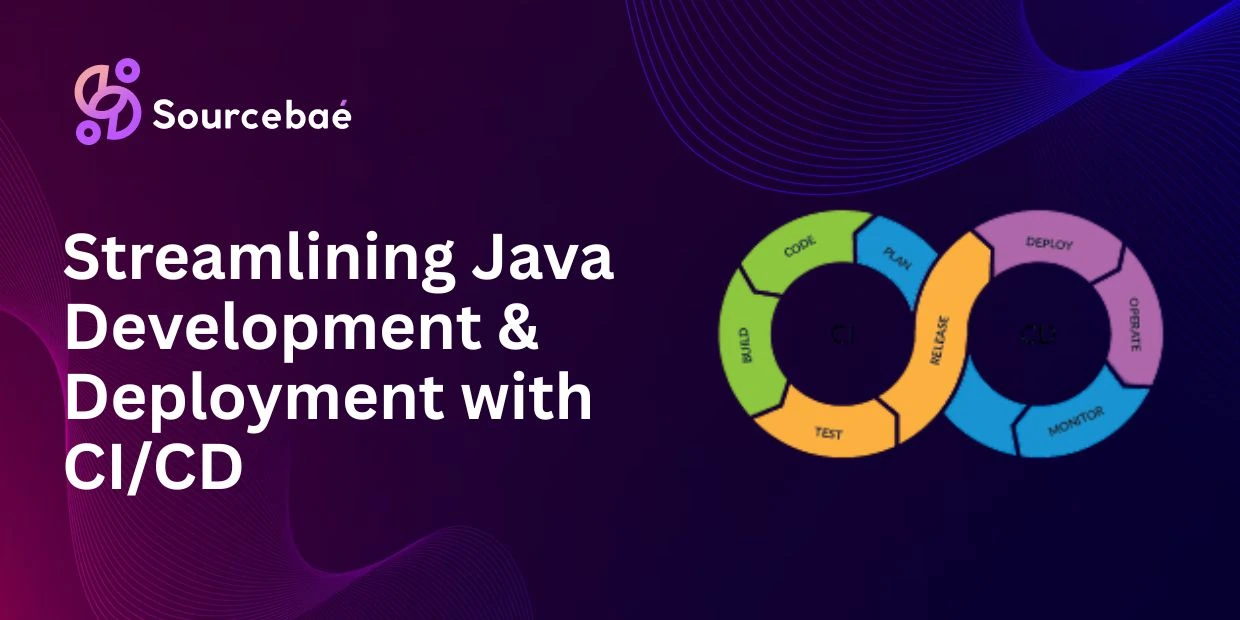In the fast-paced world of software development, staying ahead requires efficiency, precision, and agility. Java, as one of the most widely used programming languages, has evolved over the years, and so have the methodologies for developing and deploying Java applications. This article dives into the realm of Streamlining Java Development and Deployment with CI/CD Pipeline – a transformative approach that promises to accelerate your development cycle while maintaining code quality and reliability.
Modern software development demands efficiency, agility, and the ability to adapt quickly to changes. The traditional waterfall approach no longer aligns with the pace of innovation. This is where Continuous Integration and Continuous Deployment (CI/CD) pipelines come into play. In this article, we will explore how leveraging CI/CD pipelines can revolutionize your Java application development and deployment processes.
Understanding CI/CD Pipeline
Continuous Integration (CI) is the practice of frequently integrating code changes into a shared repository. This allows developers to catch integration issues early and ensure that the codebase is always in a stable state. On the other hand, Continuous Deployment (CD) takes the process a step further by automatically deploying code changes to production or staging environments after passing automated tests.
By combining CI and CD into a seamless pipeline, developers can ensure that every code change is rigorously tested, integrated, and deployed, reducing the risk of bugs and enhancing collaboration among development teams.
Benefits of Streamlining Java Development with CI/CD
- Accelerated Development Cycle: CI/CD pipelines facilitate faster development by automating repetitive tasks, such as testing and deployment. This results in shorter release cycles and quicker delivery of new features.
- Enhanced Code Quality: Automated testing and integration ensure that code is thoroughly checked for errors and compatibility. This leads to higher code quality and reduces the likelihood of production issues.
- Reduced Manual Errors: Manual deployment processes are prone to human errors. CI/CD pipelines automate deployment, minimizing the risk of configuration mistakes and inconsistencies.
- Efficient Collaboration: CI/CD promotes collaboration among developers, testers, and operations teams. With a standardized deployment process, teams can work cohesively and deliver value more efficiently.
- Quick Issue Resolution: If a problem arises, CI/CD’s automated testing and deployment allow for rapid identification and resolution of issues, leading to improved overall system stability.
Implementing CI/CD for Java Applications
- Setting Up Version Control: Begin by using a version control system like Git to manage your codebase. This ensures that change are tracked and can be easily rolled back if necessary.
- Automating Builds: Utilize build automation tools like Maven or Gradle to streamline the compilation and packaging of your Java applications. This eliminates manual build processes and reduces errors.
- Automated Testing: Implement automated testing suites that cover unit, integration, and functional testing. Tools like JUnit and TestNG are valuable assets in ensuring code correctness.
- Continuous Integration Configuration: Configure a CI server such as Jenkins or Travis CI. These tools monitor your repository for changes and trigger automated builds and tests.
- Deployment Automation: Integrate deployment tools like Docker and Kubernetes to automate the deployment process. This ensures consistency across different environments.
- Monitoring and Feedback: Set up monitoring and logging to track the performance of your deployed applications. This data provides insights into system behavior and aids in further optimizations.
Best Practices for Effective CI/CD Pipelines
- Maintain Test Coverage: Comprehensive test coverage is essential. Make sure your automated tests cover a wide range of scenarios to catch potential issues early.
- Automate Everything: From builds to tests to deployments, aim to automate every step in the pipeline. This reduces human intervention and the associated risk of errors.
- Versioning: Keep track of your application’s versions and dependencies. Utilize versioning tools to manage dependencies and ensure consistency across environments.
- Parallelism: Design your CI/CD pipeline to run tests and tasks in parallel whenever possible. This optimizes resource utilization and speeds up the pipeline.
- Security Checks: Integrate security scanning tools to identify vulnerabilities in your codebase and dependencies. Security should be a priority at every stage.
Common FAQs About CI/CD for Java Applications
Q: What are the key advantages of using a CI/CD pipeline for Java applications?
A: CI/CD pipelines offer benefits such as faster development cycles, improved code quality, reduced manual errors, efficient collaboration, and quicker issue resolution.
Q: How can I get started with implementing a CI/CD pipeline for my Java project?
A: Begin by setting up version control, automating builds, implementing automated testing, and configuring a CI server. Gradually integrate deployment automation and monitoring tools.
Q: Are there any risks associated with CI/CD pipelines?
A: While CI/CD pipelines bring numerous benefits, inadequate testing or misconfigured pipelines can lead to deployment of faulty code. Thorough testing and monitoring are essential to mitigate such risks.
Q: Which tools are commonly used for CI/CD in Java development?
A: Jenkins, Travis CI, CircleCI, GitLab CI/CD, and Bamboo are popular choices for setting up CI/CD pipelines in Java development.
Q: How does CI/CD contribute to DevOps practices?
A: CI/CD is a cornerstone of DevOps. It enables teams to release code more frequently, respond to changes faster, and maintain a culture of collaboration and continuous improvement.
Q: What role does automation play in CI/CD pipelines?
A: Automation eliminates manual and repetitive tasks, reducing human errors and speeding up processes. It ensures consistent and reliable results across the development and deployment lifecycle.
Conclusion
Embracing a CI/CD pipeline for your Java application development and deployment brings a paradigm shift in the way software is built, tested, and deployed. The efficiency, quality, and collaboration it fosters are instrumental in staying competitive in today’s software landscape. By automating tasks, catching issues early, and delivering code more frequently, you can achieve greater agility and innovation while maintaining high standards of code integrity. Streamline your Java development process with a well-designed CI/CD pipeline, and witness the transformation it brings to your software delivery lifecycle.
SOURCEBAE: HIRE REACT DEVELOPER





